By Value Penguin
Singapore media has been writing alarming reports about rising level of debt in Singapore. In order to help our readers truly understand this topic’s main issues, we have researched this topic in depth. Our analysts found the average debt per Singaporean household to be S$54,285 per capita.
Combined data from the Department of Statics Singapore and other government agencies allowed us to dive deeper into household debt in Singapore, and look beyond the face value of those two figures. Below you’ll find some of the most prominent trends that emerged from the available data.
Key Findings
- Average Household Debt: S$54,285
- Total Outstanding Singaporean Consumer Debt: S$307.5bn
- High interest debt like credit cards and personal loans have been the fastest growing debt category, now comprising +21% of total household liabilities.
- Household debt level seems on par with other developed countries that have been suffering from low income growth and high cost of living like Korea and the US.
Average Household Debt by Category
According to data from the Department of Statics Singapore, the average debt of a Singaporean household is about S$54,285 per capita as of 30 September 2016, which is roughly flat from its level in 2015. To calculate this measure, we utilize the data collected by the government every 3 months on household debt and population, which resents the most reliable measure of consumer indebtedness in the country. Most of this debt is home loans, which comprises of 74.8% of household debt in Singapore. Other main categories include motor loans (3.1%), credit card debt (3.35%) and others (18.76%), which includes personal loans, educations and other alternative loans.
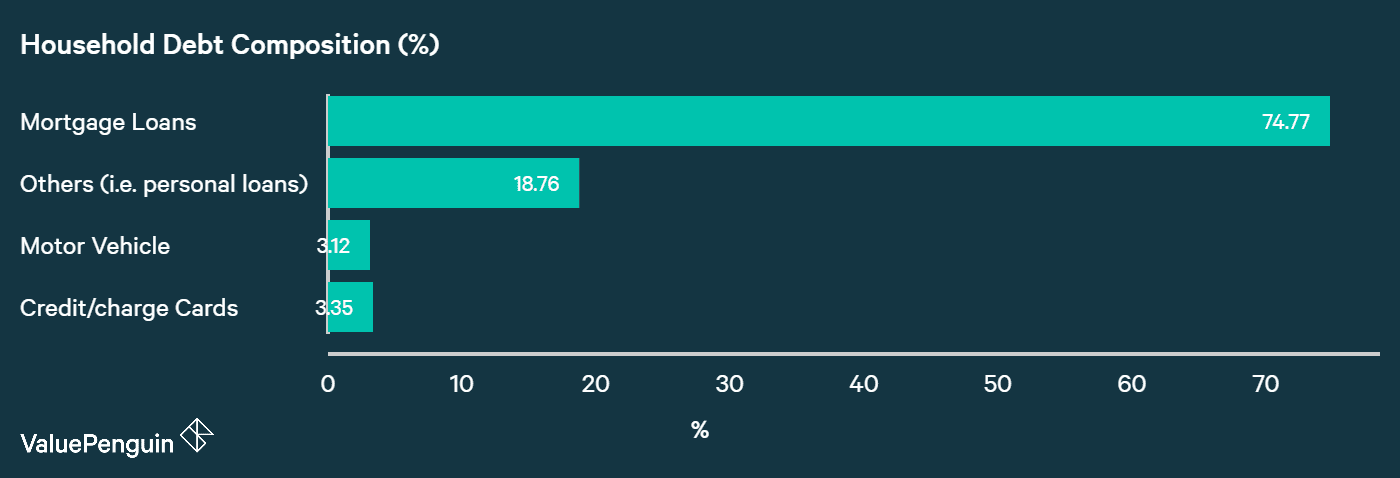
In total, household debt has been increasing at around 2.85% in 2016, which is slightly faster than 2.4% we saw in 2015. It’s important to note that this growth rate is meaningfully slower than the average growth rate of 9% that household debt growth saw from 2009 to 2014. However, despite the slight acceleration in debt growth, household balance sheet remained in a good shape as its assets and net worth (asset – liability) grew at an even faster rate.
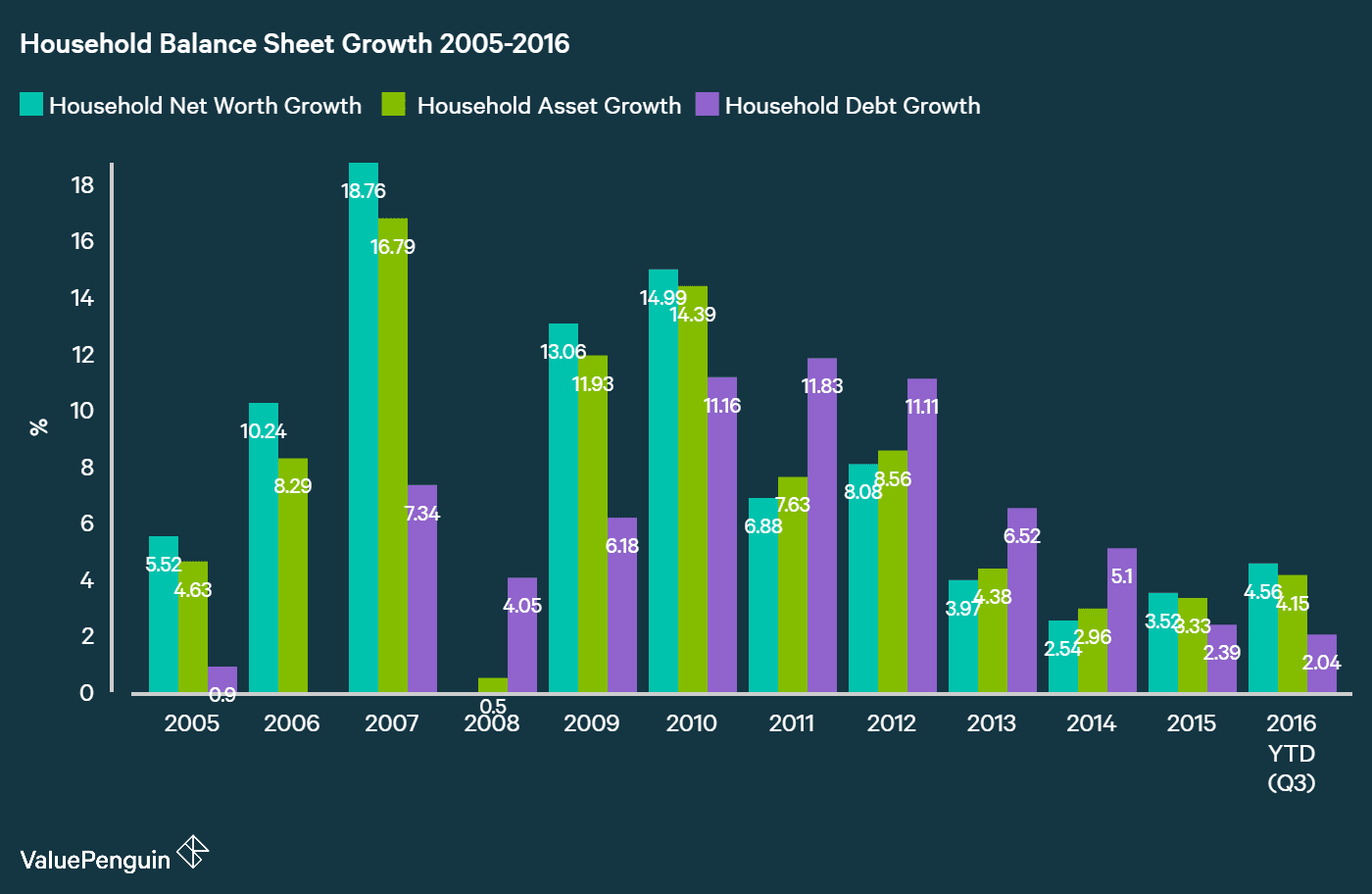
Average Home Loans Per Capita In Singapore
Average home loans per capita was about S$40,591 per capita, representing about 75% of the total. The total outstanding mortgage loans in Singapore was about S$229.92bn as of 30 Sept 2016, which grew 3.2% from the same period in 2015. Interestingly, home loan from HDB actually shrank as a percentage of total home loans, from +30% before 2009 to only about 17% in the recent years. This is likely due to the government’s efforts to curb housing price inflation by limiting government funding for purchasing homes. In fact, HDB loan has been declining by about 3% per year since 2009. However, banks have clearly picked up the slack, evidenced by 12.5% per year growth of home loans from financial institutions since 2009.
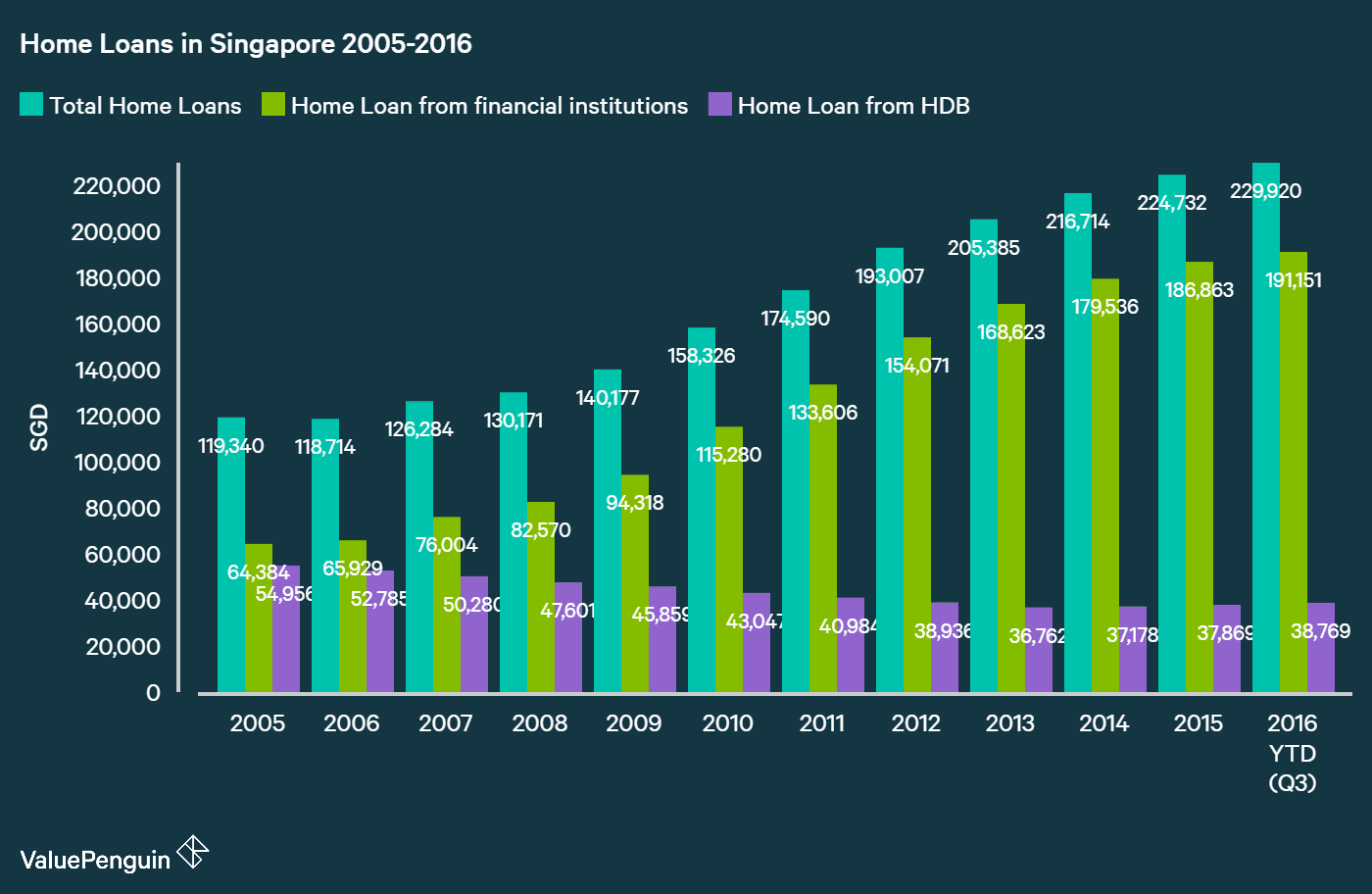
Average Car Loans Per Capita In Singapore
Average car loan per capita in Singapore was about S$1,692 as of 30 Sept 2016, representing about 3% of the total household debt. Perhaps because of the extremely high car prices in the country, auto loans have not been that popular to the locals. Overall amount of outstanding auto loans has in fact declined to S$9.6bn, roughly -8% per year of decrease since 2009.
Average Credit Card Debt Per Capita In Singapore
The mean credit card debt of Singaporean households is approximately S$1,816, according to the latest data from the Department of Statistics of Singapore. This captures the ending credit card balance that remained unpaid at the end of the month, instead of the “true” debt amount that had been rolled over from the previous month. This information comes from data collected from 1995 up to 30 September 2016.
Credit card debt actually has been one of the fastest growing category of consumer debt in Singapore. From 2009, credit card & charge card debt has been growing at about 8.9% per annum basis, compared to 8.3% for the entire household debt. This trend was more pronounced until 2014, when credit card debt had been growing by 11.1% per annum since 2009. In recent years, card debt growth has slowed meaningfully.
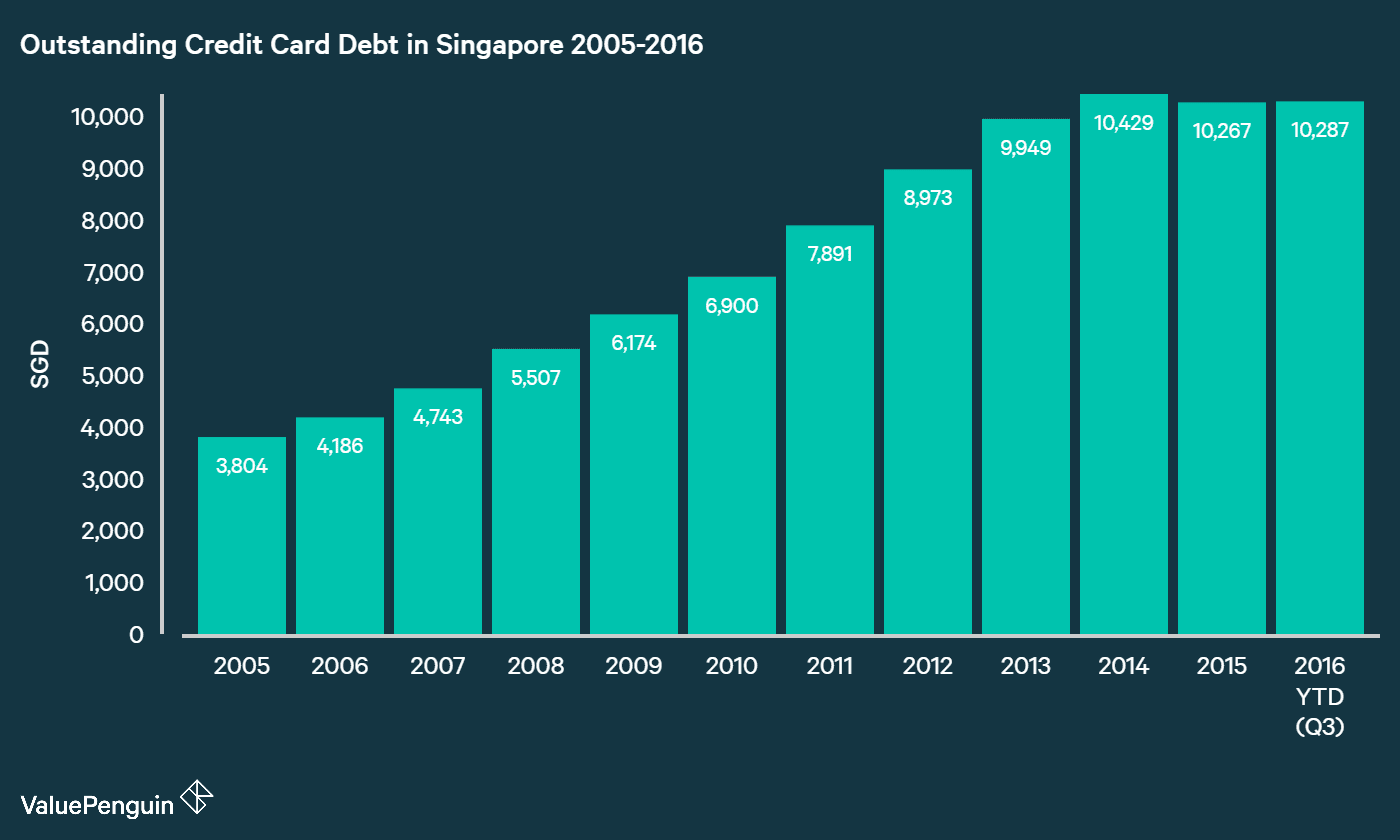
However, the above figures somewhat exaggerate the level of indebtedness on credit cards. Because the data from Department of Statistics measures the outstanding balance at the end of the month, it includes credit card balance that will be paid off before the end of their billing cycles. In order to adjust for this, we analyzed data from Monetary Authority of Singapore, which reports “rolled over” balance of credit cards. Rolled over credit card balance is a more accurate representation of how much credit card “debt” exists in the system.
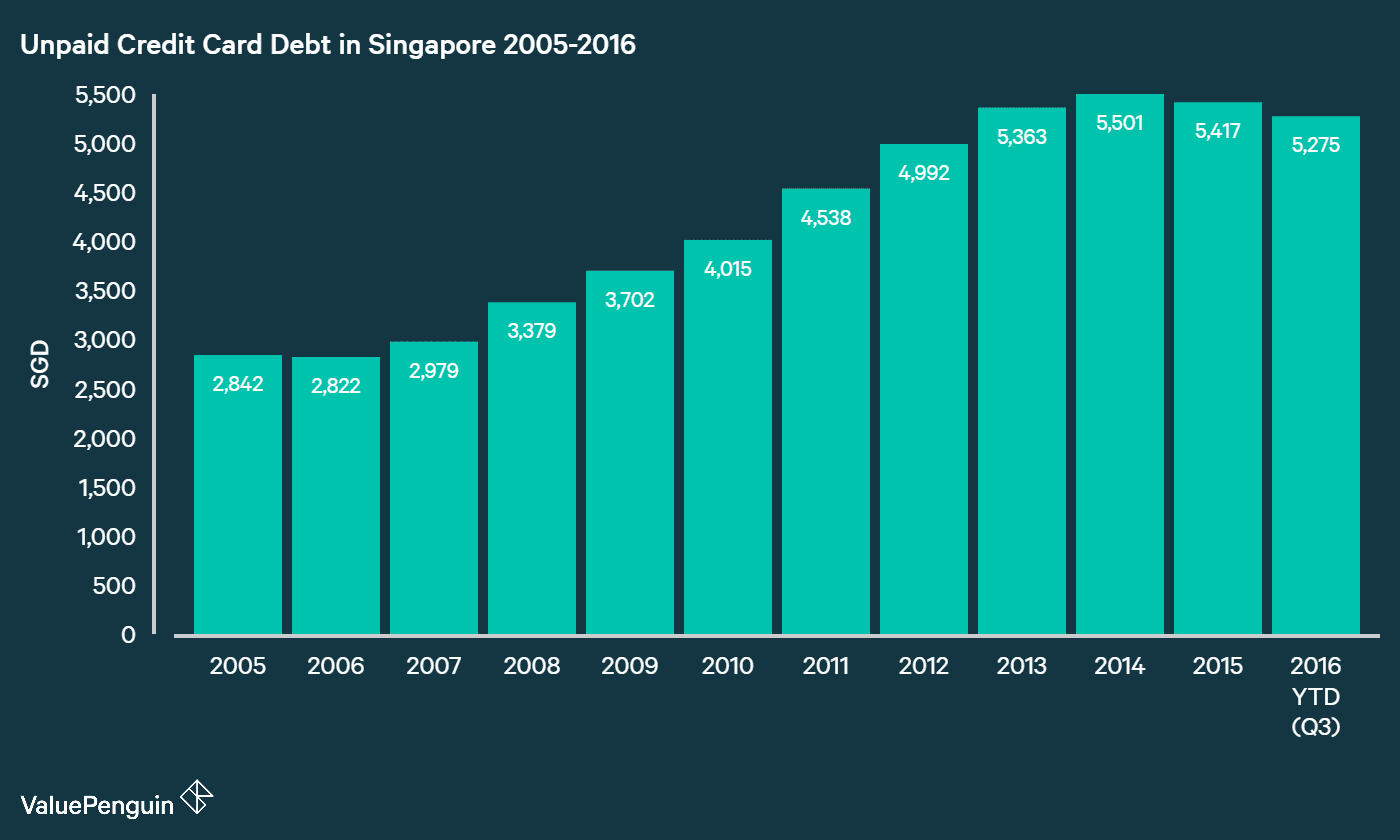
According to this figure, average credit card debt per capita (i.e. amount that could not be paid off right away) was about S$933. While this may sound high to some people, Singapore’s credit card debt situation is not as acute as it is in other developed countries. For instance, credit card debt per capita is over $1,000 in countries like Korea and Australia, while it can be up to $2,000 or more in Hong Kong and the US.
| Country | Credit Card Debt ($ bn) | CC Debt per Capita ($) | CC Debt per Card ($) |
|---|---|---|---|
| Taiwan | $3.4 | $130 | $86 |
| Singapore | $4.0 | $733 | $421 |
| Japan | $92.6 | $729 | $356 |
| Australia | $24.5 | $1,062 | $1,495 |
| Korea | $60.0 | $1,200 | $522 |
| HK | $14.5 | $1,980 | $779 |
| US | $885.0 | $2,603 | $843 |
| UK | $85.8 | $1,340 | $1,430 |
Average Personal Loans Per Capita In Singapore
Average personal loan per capita in Singapore was roughly $10,186 as of 30 Sept 2016. This figure includes loans like personal instalment loans, home renovation loans, education loans and pawn shop loans. Somewhat like credit cards, personal loans have been a popular way of financing one’s needs in the recent years. Before 2009, this category of loans only comprised about 15% of a household’s liability. By 2016, its proportion has increased to almost 19%. It has been the fastest growing category of loans in Singapore, with an annual growth rate of 13% from 2009 to 2016. This may be a bad signal that hints at weak consumer purchasing power, especially when it comes to important but pricey things like college tuition or wedding costs.

Comparison with Other Countries
While household debt has been growing at an alarming rate since 2009, trends have been more or less stabilizing since 2015. Part of this is due to weak economy which is creating less opportunities for consumers to invest into (i.e. homes or small businesses). What’s also a legitimate cause for concern is that, despite stabilization of overall debt growth, consumers are growing increasingly reliant on alternative source of financing like personal loans, which typically come at relatively high interest rates. This could signal that household income growth is not sufficient to fund increasing cost of living in the country.
On the other hand, the situation in Singapore does not seem so bad when seen side to side with other countries. Below, we show household debt per capita, household leverage (asset/equity), and household debt as a % of GDP for Singapore, Korea and the US. As you can see, Singapore household’s indebtedness is more or less in line with the other two countries. However, it is important to note that both Korea and the US have also been experiencing lagging consumer income growth & increasing reliance on debt. These are certainly worrying signs for the economy.
| Singapore | Korea | US | |
|---|---|---|---|
| Household Debt per Capita (local Currency) | SGD54,909 | KRW25,606,222 | $46,031 |
| Household Debt per Capita ($) | $38,131 | $21,499 | $46,031 |
| Household Asset/Equity Ratio | 119% | 83% | 89% |
| Household Debt to GDP Ratio | 61% | 90% | 80% |
This article was first published at Valuepenguin.sg




